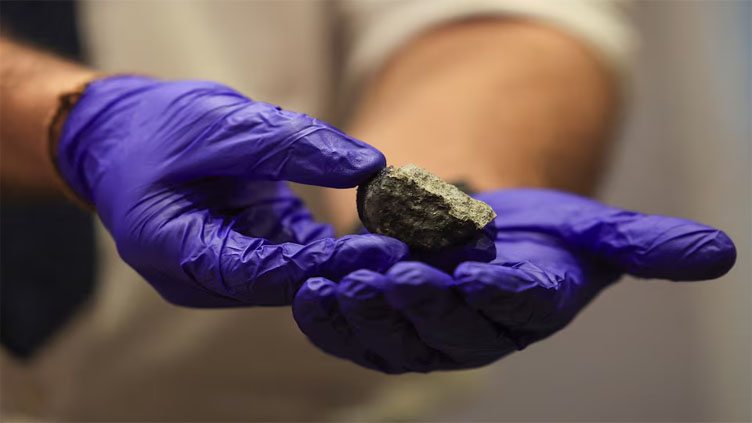Astronomers trace the origin of meteorites that have struck Earth

Technology
Collisions in the main asteroid belt send rocky fragments flying haphazardly through space
WASHINGTON (Reuters) - Meteorites - rocks that fall to Earth from space - have pelted our planet from its birth about 4.5 billion years ago to today, often causing scant damage but sometimes triggering cataclysms. But from where exactly are these space rocks coming? New research has the answer.
By studying the composition of meteorites that have landed over the years and the asteroids populating our solar system, astronomers have determined that about 70% of known meteorite impacts came from just three groups of asteroids residing in our solar system's main asteroid belt between Mars and Jupiter.
In total, the researchers in three different studies have now been able to account for the origins of most of the tens of thousands of known meteorites that have landed on Earth.
As part of the research, the astronomers carried out numerical simulations that enabled them to model the formation and evolution of families of asteroids orbiting the sun in the main asteroid belt.
"It is a group of asteroids which have similar orbits because they were fragments created during a collision between two asteroids," said astronomer Miroslav Brož of Charles University in Prague, lead author of two of the studies, published in the journal Nature and Astronomy and Astrophysics.
Collisions in the main asteroid belt send rocky fragments flying haphazardly through space, with some of those eventually striking Earth.
"While more than 70,000 meteorites are known, only 6% had been clearly identified by their composition as coming from the moon, Mars, or Vesta, one of the largest asteroids in the main asteroid belt.
The source of the other meteorites had remained unidentified," said astronomer Michaël Marsset of the European Southern Observatory in Chile, lead author of one of the two studies published in the journal Nature.
The Massalia asteroid family, formed about 40 million years ago, accounts for a class of meteorites called L chondrites that represent 37% of known Earth meteorites, the research found.
The Karin family, formed 5.8 million years ago, and the Koronis family, formed 7.6 million years ago, account for a class of meteorites called H chondrites that represent 33% of known Earth meteorites, it showed.
Another 8% of the Earth meteorites can be traced to the Flora and Nysa asteroid families in the main asteroid belt, the research found. And about 6% of the meteorites can be traced to Vesta, it showed. Previous research found that less than 1% of the meteorites came from Mars and the moon.
The researchers are still exploring the source of the remaining roughly 15% of known Earth meteorites. Space rocks have played a role in shaping the direction of life on Earth.
The new research did not look at the source of the one that struck Earth 66 million years ago that wiped out the dinosaurs, aside from their bird descendants, and enabled mammals to become dominant.
Another study published in August found that this object formed beyond Jupiter and probably migrated inward to become part of the main asteroid belt before being sent hurtling toward Earth, perhaps due to a collision.
As the dinosaur-killing impact showed, a large space rock can pose a mortal threat to life on Earth. In 2022, NASA's DART spacecraft slammed into the asteroid Dimorphos in a proof-of-principle planetary defense mission that showed that a spacecraft can change a celestial object's trajectory just enough to keep Earth safe.
Some of the meteorites that have landed on Earth can give clues about the solar system's early history. They are primordial leftovers from a time before the planets formed in a large disk of material - called the protoplanetary disk - swirling around the newborn sun.
"Chondrites are primitive meteorites that have mostly preserved their original composition since their formation in our protoplanetary disk," Marsset said.



